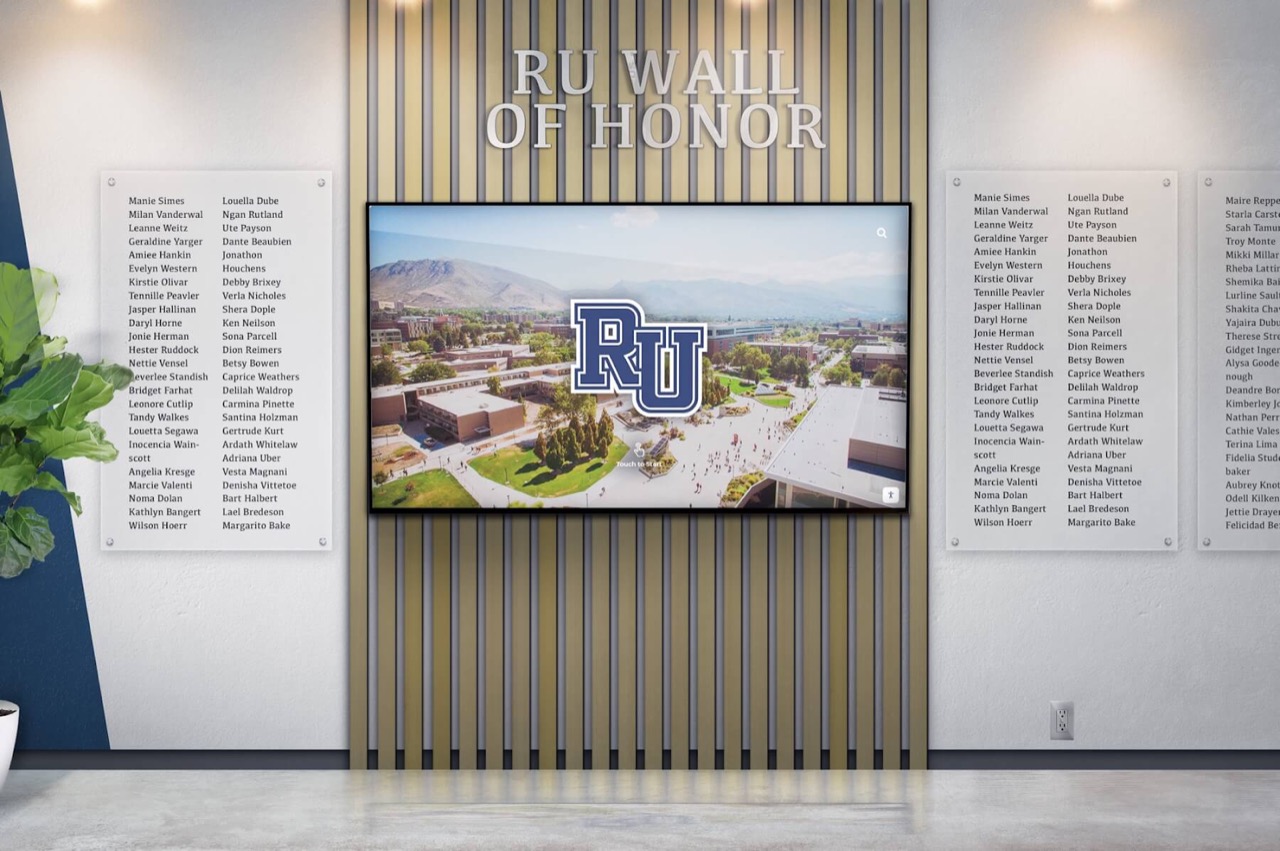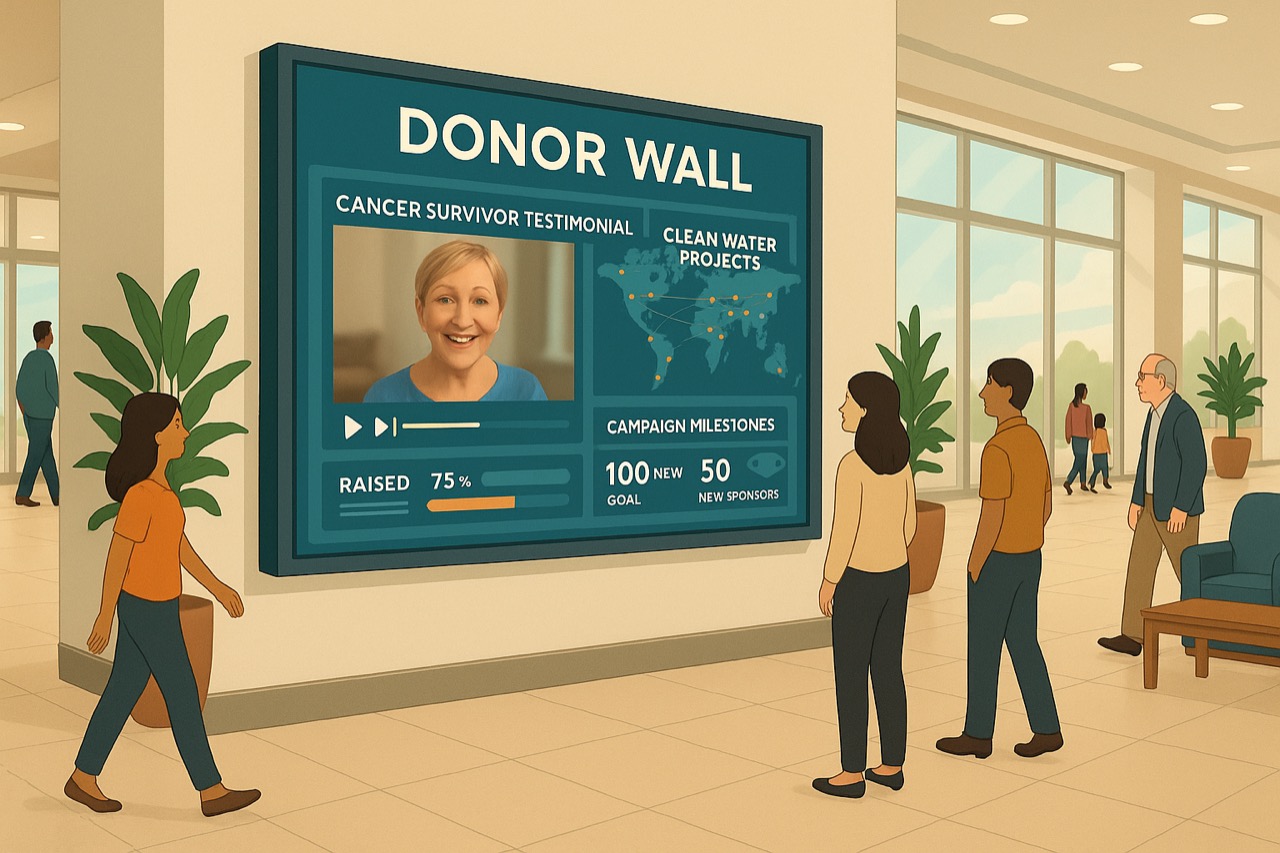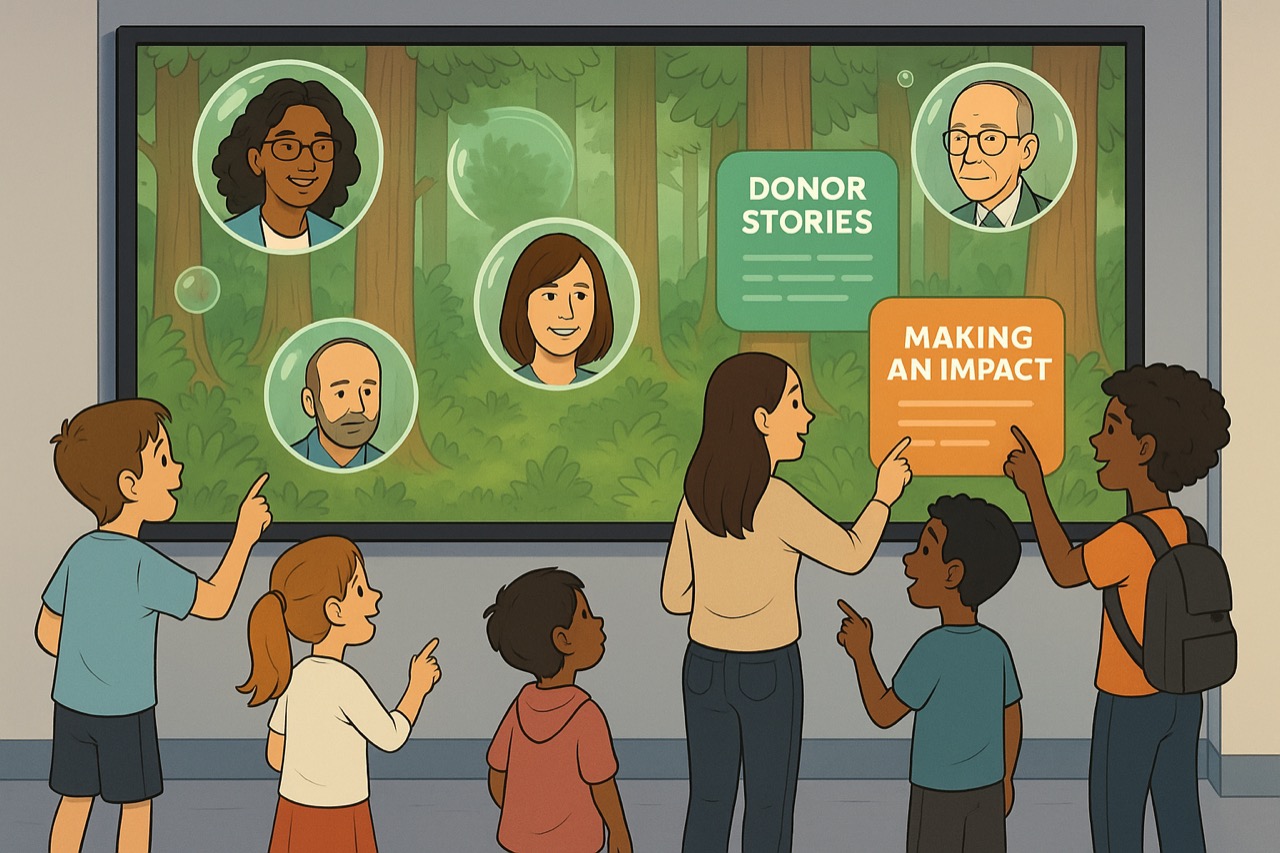Donor recognition walls have always played a critical role in celebrating generosity and cultivating long-term support for institutions. From hospitals and museums to universities and nonprofits, these installations provide visibility to the individuals and organizations who make vital work possible.
But in a world that increasingly values engagement, interactivity, and storytelling, traditional donor walls simple engraved plaques or printed boards, are starting to feel dated. They lack the power to educate, inspire, or invite exploration. More importantly, they fail to match the expectations of modern audiences who want to connect with causes on a deeper, more personal level.
This is why we’re witnessing a shift: from static lists of names to interactive, digital donor walls that can educate, inform, engage, and entertain while still honoring every gift with intention.
Static Walls No Longer Do Enough

Walk into any major hospital or university built before the digital age, and you’ll find the same thing: a wall of donor names, elegantly displayed, yet functionally passive.
There’s no context. No emotional resonance. No way to understand who these people are, why they gave, or how their support made a difference.
Traditional donor recognition walls often come with significant limitations:
- They’re difficult and expensive to update
- They tell no stories
- They aren’t designed to evolve with new campaigns or audiences
- They fail to invite interaction or curiosity
In contrast, today’s visitors are used to digital-first experiences that are immersive and responsive. People are more likely to connect with causes when content is visual, interactive, and human-centered, something no static display can achieve on its own.
The Case for Interactive, Multi-Purpose Recognition

Modern donor recognition is not just about acknowledgment. It’s about amplifying the mission, educating the public, and inspiring future contributions.
By transforming the donor wall into a multi-purpose platform, organizations can unlock far more value:
- Educate visitors about the impact of each donation through stories, data, and multimedia
- Inform supporters about ongoing needs, goals, and community progress
- Engage new audiences with touchscreen interfaces, interactive maps, and campaign visuals
- Entertain younger or more casual audiences through gamified experiences that teach while they play
The shift to interactive donor recognition walls also allows institutions to tie campaigns to larger global movements. Imagine displays that celebrate contributions to:
- Cancer research breakthroughs
- Wildlife and habitat preservation
- Local education access and equity
- Clean water and environmental restoration
Each of these causes becomes an opportunity not only for recognition but for storytelling, action, and learning.
Recognition That Inspires Participation

One of the most powerful aspects of digital donor walls is that they invite users to participate in the story, not just view it.
Rather than passively walking past a wall of names, visitors can:
- Tap to explore personal donor stories
- Watch video testimonials from recipients or community members
- Follow campaign milestones in real time
- Learn about how gifts have shaped lives or funded specific programs
- Play cause-related mini-games or quizzes designed to educate
The best donor recognition displays function as living experiences constantly evolving, reflecting real-time contributions, and fostering deeper emotional connections between donors, beneficiaries, and the broader community.
Data-Driven Engagement & Personalization
Another advantage of digital systems is measurement. While static walls are impossible to track, modern recognition platforms allow organizations to monitor exactly how visitors interact with the display:
- Which content is viewed most frequently
- What kind of stories attract repeat engagement
- How different age groups or visitor types interact
- When and how new information should be introduced
This creates an opportunity to custom-tailor the experience over time.
For example, a child might be drawn to playful, animated stories about conservation, while a returning donor might view detailed stats on campaign impact. As the system learns, it becomes better at offering personalized content, increasing the likelihood of future engagement and support.
The Future of Donor Recognition Is Experiential
We are moving beyond recognition as a passive form of gratitude. Today, the goal is to make each gift part of a greater narrative, one that teaches, connects, and compels.
The most effective donor recognition displays in 2025 and beyond will be:
- Interactive, inviting exploration and agency
- Educational, contributing to public knowledge, and advocacy
- Emotionally resonant, connecting donors to the lives they’ve helped change
- Dynamic, evolving with each new gift and initiative
- Entertaining, especially for younger visitors who may become future donors
Whether you’re building a new hospital wing, launching an environmental campaign, or supporting underserved students, your donor recognition strategy should be designed not only to honor but to inform, inspire, and grow support for the future.
Explore How Ouva Supports Interactive Donor Recognition
If you're ready to rethink donor walls as purpose-driven experiences, explore how Ouva’s interactive platform blends storytelling, personalization, and real-time analytics to create multi-purpose displays that educate while they engage.
From hospitals and schools to senior care and public institutions, Ouva helps organizations transform recognition into an opportunity for learning, connection, and ongoing support.
Learn more in these related blog posts:
- How Interactive Sensory Walls Are Revolutionizing Patient Care & Recovery
- The Complete Guide to Autism Support and Evidence-Based Strategies in 2025
- Best Practices for Effective Sensory Rooms in Schools
Recognition is evolving; don’t let your story stay static.
